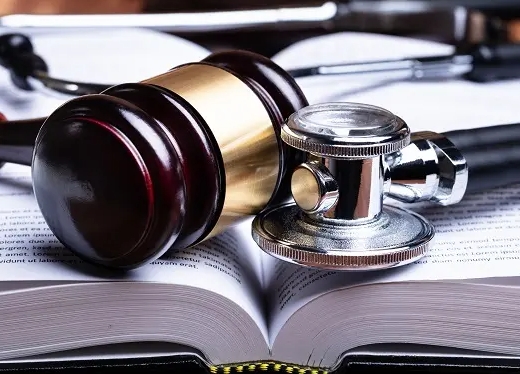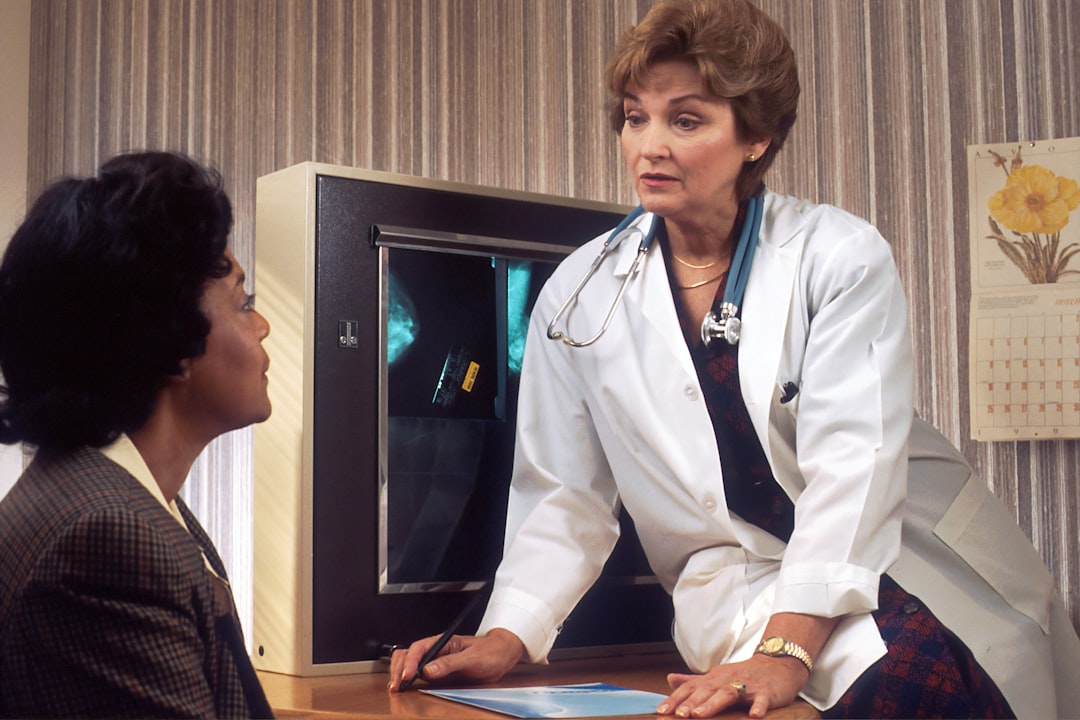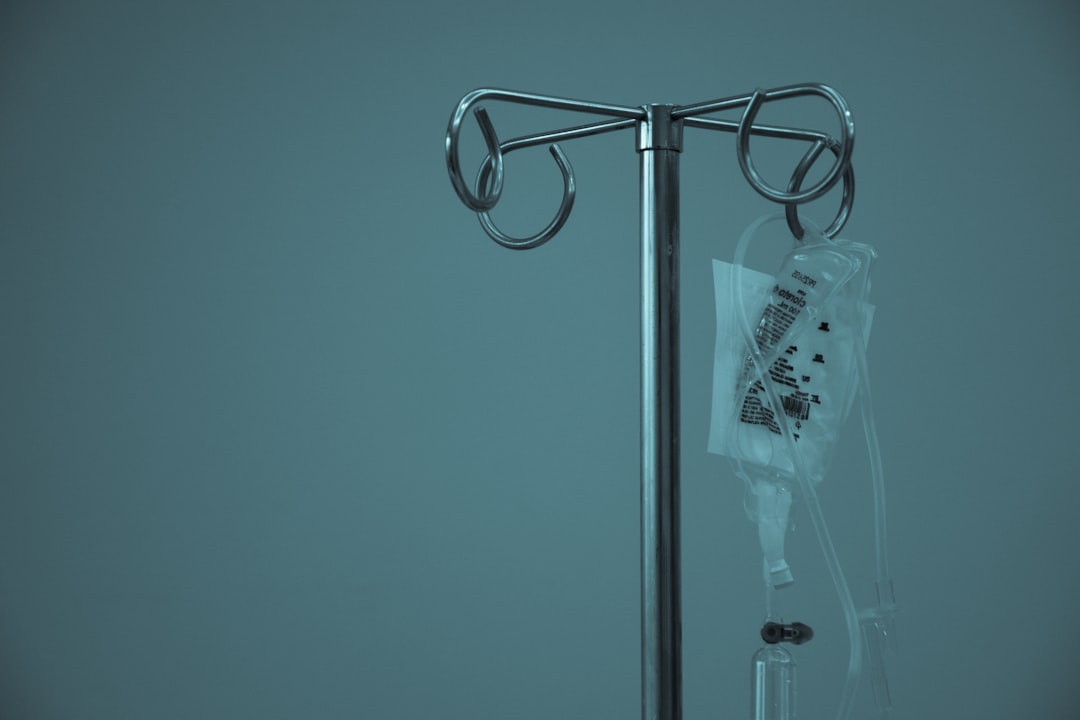Importance of Accurate Documentation
The Importance of Accurate Documentation in Medical Error Reporting
In the intricate and high-stakes world of healthcare, accurate documentation stands as a cornerstone for ensuring patient safety, enhancing care quality, and fostering continuous improvement within medical practice. Nowhere is this more critical than in the domain of medical error documentation. At its core, the meticulous recording of errors serves not just as a procedural necessity but as a vital instrument for learning, accountability, and systemic betterment.
Medical errors, which can range from minor oversights to grave mistakes with fatal consequences, are an unfortunate reality in clinical settings. These errors might stem from various sources-human factors, system failures, or even unpredictable patient responses. Regardless of their origin, each incident carries valuable lessons that can prevent recurrence and improve overall healthcare delivery. This is where accurate documentation becomes indispensable.
Firstly, precise documentation ensures that every detail surrounding an error is captured comprehensively. The who, what, when, where, why, and how of an incident need to be recorded meticulously to provide a clear narrative that stakeholders can analyze. Incomplete or incorrect information can obscure the root cause of an error and hinder efforts to address it effectively. On the other hand, thorough documentation allows healthcare professionals to identify patterns and systemic issues rather than attributing faults solely to individual practitioners.
Furthermore, transparent and accurate medical error reporting cultivates a culture of openness and trust within healthcare organizations. When staff members are encouraged to report errors without fear of punitive repercussions-knowing that their accounts will be accurately documented-it fosters an environment where learning from mistakes is prioritized over assigning blame. This cultural shift is crucial for implementing effective corrective actions and promoting continuous professional development among healthcare providers.
Accurate documentation also plays a pivotal role in legal and regulatory contexts. Healthcare facilities operate under stringent laws designed to protect patients' rights and ensure safe practices. In cases where medical errors result in litigation or regulatory scrutiny, comprehensive records become essential evidence that can demonstrate adherence to protocols or reveal lapses needing attention. Proper documentation thus safeguards both patients' interests and institutional credibility.
Moreover, detailed records support research initiatives aimed at understanding medical errors on a broader scale. Aggregated data from documented incidents provide researchers with insights into prevalent issues across different settings or populations. Such evidence-based findings inform policy-making processes and guide innovations in medical training programs designed to mitigate common errors.
In conclusion, the importance of accurate documentation in medical error reporting cannot be overstated. It serves as the bedrock upon which safer healthcare systems are built-facilitating learning from past mistakes while paving the way for future advancements. By prioritizing meticulous record-keeping practices within clinical environments worldwide; we take significant strides towards minimizing harm; enhancing patient outcomes; fostering professional growth; maintaining legal compliance; driving research endeavors; ultimately achieving excellence in patient care delivery
Common Types of Medical Errors
Medical errors are an unfortunate reality in healthcare, with the potential to cause significant harm to patients. These errors can occur at various stages of patient care and can be broadly categorized into several common types. Understanding these categories is crucial for improving medical error documentation and ultimately enhancing patient safety.
One prevalent type of medical error is medication errors. These include mistakes in prescribing, dispensing, or administering medications. For instance, a physician might prescribe the wrong dose or the wrong medication altogether. In other cases, a nurse might administer a drug incorrectly or fail to check for potential allergies. Medication errors can lead to adverse drug reactions, some of which can be life-threatening.
Diagnostic errors are another significant category. These occur when there is a delay in diagnosis, a misdiagnosis, or a failure to diagnose altogether. Diagnostic errors can result from inadequate clinical judgment, lack of appropriate testing, or even faulty communication among healthcare providers. The consequences can be severe if conditions are not identified and treated promptly.
Surgical errors represent another critical area where mistakes can have dire consequences. Wrong-site surgery-where an operation is performed on the wrong part of the body-is perhaps one of the most alarming examples. Other surgical errors include leaving surgical instruments inside a patient's body or performing the incorrect procedure entirely. Such errors often require additional surgeries and prolonged hospital stays, compounding both physical and emotional suffering for patients.
Communication failures also constitute a major source of medical errors. Effective communication among healthcare providers is essential for ensuring continuity of care and avoiding misunderstandings that could jeopardize patient safety. Errors in this category could involve miscommunication during handoffs between shifts or inaccuracies in documenting patient information in medical records.
Infections acquired during hospital stays-known as nosocomial infections-are another common type of medical error that significantly impacts patient outcomes. These infections often occur due to lapses in hygiene protocols or improper use of medical equipment like catheters and ventilators.
Lastly, administrative errors such as incorrect billing codes or mishandled insurance claims may not directly harm patients but create confusion and stress that can indirectly impact their well-being by delaying necessary treatments.
To mitigate these common types of medical errors, robust documentation practices are essential. Accurate documentation helps identify patterns that could indicate systemic issues requiring attention. It also ensures accountability and provides valuable data for training healthcare professionals on best practices aimed at reducing future mistakes.
In conclusion, while medical errors are varied and complex, they share common roots that can be addressed through meticulous documentation and continuous education within the healthcare system. By focusing on proper documentation practices alongside fostering open communication channels among all stakeholders involved in patient care, we can take significant strides toward minimizing these harmful occurrences and safeguarding patient health.
Best Practices for Documenting Errors
Documenting medical errors is a critical practice in healthcare, as it aids in understanding the root causes of mistakes and helps to prevent their recurrence. Best practices for documenting these errors involve a systematic approach that prioritizes clarity, accuracy, and confidentiality.
First and foremost, it is essential to document errors promptly. Timeliness ensures that the details are fresh in the minds of those involved and reduces the risk of information being forgotten or misremembered. Immediate documentation also allows for quicker intervention if necessary, potentially mitigating further harm to patients.
Accuracy is another vital element. When documenting an error, all relevant facts should be recorded thoroughly and precisely. This includes the time and date of the incident, a detailed description of what occurred, who was involved, and any immediate actions taken in response. Avoiding subjective language or conjecture is crucial; stick to verifiable facts to maintain the integrity of the report.
Confidentiality must be maintained throughout the documentation process. While transparency with patients about errors is important for ethical reasons and maintaining trust, patient privacy laws such as HIPAA in the United States mandate that sensitive information be protected. Therefore, documentation should be handled discreetly and stored securely, accessible only to authorized personnel.
In addition to these foundational principles, using standardized forms or electronic health record (EHR) systems can greatly enhance consistency in error reporting. Standardization helps ensure that all necessary information is captured each time an error occurs and facilitates easier analysis later on.
Moreover, fostering a non-punitive culture around error reporting encourages more consistent documentation. Healthcare professionals are more likely to report mistakes if they do not fear retribution or blame. Emphasizing a culture of learning rather than punishment can improve overall safety by highlighting areas where systemic changes are needed.
Lastly, continuous education on best practices for error documentation should be provided to all healthcare staff. Regular training sessions can keep everyone updated on new protocols or changes in legislation affecting documentation practices.
In summary, best practices for documenting medical errors include promptness, accuracy, maintaining confidentiality, using standardized reporting tools, fostering a non-punitive culture around error reporting, and continuous staff education. By adhering to these guidelines, healthcare providers can better understand why errors occur and how they can be prevented in the future-ultimately leading to improved patient safety and care quality.
Legal and Ethical Considerations
Medical error documentation is a crucial aspect of healthcare that carries significant legal and ethical considerations. Medical errors, ranging from minor mishaps to severe mistakes, can profoundly impact patient health and trust in the healthcare system. Thus, documenting these errors accurately and transparently is essential for several reasons.
From a legal standpoint, medical error documentation serves as a vital record that can be used in case of litigation. Accurate documentation provides a clear account of what transpired during the patient's care, potentially protecting healthcare providers from unwarranted lawsuits while ensuring accountability where appropriate. It helps establish whether standard procedures were followed and if any deviations occurred, which could be pivotal in determining liability. Moreover, thorough documentation can aid in recognizing patterns or recurring issues within a healthcare facility, prompting necessary changes to prevent future errors.
Ethically, the importance of documenting medical errors cannot be overstated. Healthcare professionals have an obligation to uphold principles such as autonomy, beneficence, nonmaleficence, and justice. Transparency with patients about their care is fundamental to respecting their autonomy; patients have the right to know when an error has occurred that might affect their health. This honesty fosters trust between patients and healthcare providers and emphasizes the commitment of the medical profession to prioritize patient welfare above all else.
In addition to benefiting individual patients and healthcare providers legally and ethically, proper documentation of medical errors contributes significantly to systemic improvements in healthcare quality. By analyzing documented errors collectively, institutions can identify underlying causes-whether they be human factors like fatigue or systemic issues like inadequate communication protocols-and implement strategies to mitigate them. This continuous learning loop is integral to advancing patient safety standards industry-wide.
However, despite its importance, there are barriers to effective medical error documentation. Fear of legal repercussions or professional stigma may discourage some practitioners from reporting errors candidly. Addressing this requires creating a culture within healthcare settings where transparency is encouraged and supported by policies that focus on learning rather than punishment.
In conclusion, the legal and ethical considerations surrounding medical error documentation underscore its indispensable role in modern healthcare practice. Legally, it aids in maintaining accountability and defending against unjust claims; ethically, it upholds patient rights and supports trust-building efforts; systemically, it drives improvements that enhance overall patient safety. As such, fostering an environment where accurate and honest documentation is standard practice benefits not only individual stakeholders but also the broader community relying on high-quality medical care.
Role of Technology in Error Reporting
The Role of Technology in Error Reporting: Enhancing Medical Error Documentation
In the intricate and high-stakes world of healthcare, the precision and accuracy of medical error documentation are paramount. Medical errors, whether due to human oversight or system failures, can have grave consequences for patient safety and outcomes. The advent of modern technology has brought transformative changes to various aspects of healthcare, including the critical domain of error reporting. By leveraging advanced technological tools, healthcare providers can significantly improve the documentation, analysis, and prevention of medical errors.
One of the most profound impacts of technology in this realm is the enhancement of electronic health records (EHRs). EHR systems offer a comprehensive digital repository for patient information that allows for real-time updating and easy access by authorized personnel. This streamlined access ensures that any discrepancies or adverse events are promptly documented. Moreover, sophisticated EHR systems come equipped with integrated alert mechanisms that notify healthcare providers about potential medication errors or contraindications before they occur. This proactive approach not only aids in reducing errors but also facilitates immediate rectification when mistakes are identified.
Moreover, technology has introduced automated reporting systems that simplify the error reporting process. Traditionally, documenting an error involved cumbersome paperwork and manual entry into logs, which could be time-consuming and prone to further errors. Automated systems eliminate these inefficiencies by allowing clinicians to report incidents through user-friendly interfaces quickly. These systems can also categorize errors based on severity and type, making it easier for hospital management to prioritize interventions and allocate resources effectively.
Another crucial advancement is the use of data analytics in understanding patterns and root causes of medical errors. Big data technologies enable the aggregation and analysis of vast amounts of clinical data from diverse sources within a healthcare facility. Through sophisticated algorithms and machine learning models, these technologies can identify recurring issues or emerging trends that might not be evident through traditional review processes. For instance, if a particular medication is frequently associated with adverse reactions in a specific patient demographic, predictive analytics can flag this trend early on, prompting preventive measures such as dosage adjustments or alternative therapies.
Furthermore, telemedicine platforms have revolutionized how remote consultations are conducted while ensuring accurate documentation practices are maintained. By recording virtual interactions between patients and providers with their consent, telemedicine platforms create verifiable records that contribute to comprehensive patient histories without geographical constraints-ensuring continuity-of-care even when physical consultations aren't feasible.
Technology also plays an integral role in fostering a culture of transparency within healthcare organizations regarding medical errors-a key component in promoting patient safety initiatives across institutions worldwide today more than ever before! With anonymous reporting features enabled via secure digital portals ("whistleblower" apps), staff members feel empowered-and protected-to report concerns without fear retribution thereby cultivating constructive feedback loops necessary continuous quality improvement cycles inherent successful implementation robust risk management strategies ultimately enhancing overall institutional resilience against future systemic failures alike!
In conclusion-the intersection between cutting-edge technological innovations coupled steadfast commitment unwavering dedication maintaining highest standards ethical conduct professionalism alongside diligent adherence rigorous regulatory compliance protocols collectively dictate pivotal role technology continues play shaping landscape modern-day medical error documentation practices today tomorrow beyond! As we advance further into era unprecedented digital transformation within field medicine-it remains imperative harness full potential these groundbreaking advancements mitigate risks safeguard wellbeing those entrust care every single day tirelessly striving deliver excellence forefront compassionate healing endeavors globally renowned institutions worldwide continue spearheading drive toward achieving pinnacle exemplary standards unparalleled distinction industry-wide now forevermore!
Training and Education for Healthcare Professionals
Training and education for healthcare professionals are pivotal in the realm of medical error documentation. As the backbone of patient safety, a well-structured approach to documenting medical errors is essential for minimizing harm and improving clinical outcomes. This essay underscores why comprehensive training and education are crucial in this domain.
Firstly, the complexity of modern healthcare systems necessitates meticulous attention to detail. Healthcare professionals operate in environments where a multitude of variables must be managed simultaneously. Training programs that focus on accurate medical error documentation equip these professionals with the skills to recognize, report, and analyze errors comprehensively. Such education should emphasize the importance of transparency and honesty, fostering a culture where errors are seen as opportunities for learning rather than reasons for blame.
Secondly, effective documentation serves as a critical tool for communication within multidisciplinary teams. Inadequate or erroneous documentation can lead to misunderstandings that may exacerbate patient harm. By educating healthcare workers on standardized protocols and best practices in error reporting, institutions ensure that every member of the team has access to consistent and reliable information. This uniformity enhances coordination among caregivers, ultimately leading to safer patient care.
Moreover, training focused on medical error documentation aids in legal protection for both patients and providers. Thoroughly documented errors provide clear evidence of what transpired during an episode of care, which can be invaluable during legal proceedings or investigations by regulatory bodies. Education programs need to highlight how proper documentation not only protects patients' rights but also shields healthcare providers from unwarranted litigation by presenting an honest account of events.
In addition, data collected from documented medical errors is instrumental in driving systemic improvements within healthcare organizations. When accurately captured and analyzed, this data reveals patterns that might indicate underlying issues needing attention-be it procedural flaws, equipment malfunctions, or gaps in knowledge among staff members. Through targeted training initiatives based on these insights, institutions can address root causes rather than just treating symptoms.
Furthermore, ongoing education ensures that healthcare professionals remain up-to-date with evolving standards and technologies related to error documentation. The landscape of medicine is constantly advancing; new software tools for electronic health records (EHRs) are frequently introduced, along with updated guidelines from health authorities. Continuous professional development programs help practitioners stay current with these changes, ensuring their documentation practices remain effective and compliant with contemporary standards.
Lastly, fostering an environment that prioritizes continuous learning encourages more open dialogue about mistakes. When healthcare workers feel supported through robust training programs that emphasize improvement over punishment, they are more likely to report errors candidly and promptly. This openness contributes significantly towards building a safer healthcare system where lessons learned from past mistakes actively inform future practices.
In conclusion, investing in training and education for healthcare professionals regarding medical error documentation is indispensable for enhancing patient safety and care quality. Comprehensive educational initiatives support precise communication within teams, offer legal safeguards, facilitate systemic improvements through data analysis, ensure adherence to current standards and technologies,and promote a culture of transparency and continuous improvement.By prioritizing such education,the healthcare industry takes significant strides towards mitigating risks associated with medical errors while fostering an environment conducive to high-quality patient care.





